We are underway for the 7th DolLAYER cruise and the 2nd major field sampling campaign of the project (NSF Grant #2244690). On November 7, 2024, we departed Skidaway Institute of Oceanography only to have to come back into shore twice due to bad weather. The main goal of this cruise is to sample the planktonic food webs in vertically mixed conditions, so the strong winds and big waves are certainly creating mixed up water columns! This will be a nice comparison to the stratified conditions we sampled in August, and next year, we will be going to the northern Gulf of Mexico! Here is the last look at land for a while – and the home of the RV Savannah when it’s not out at sea.
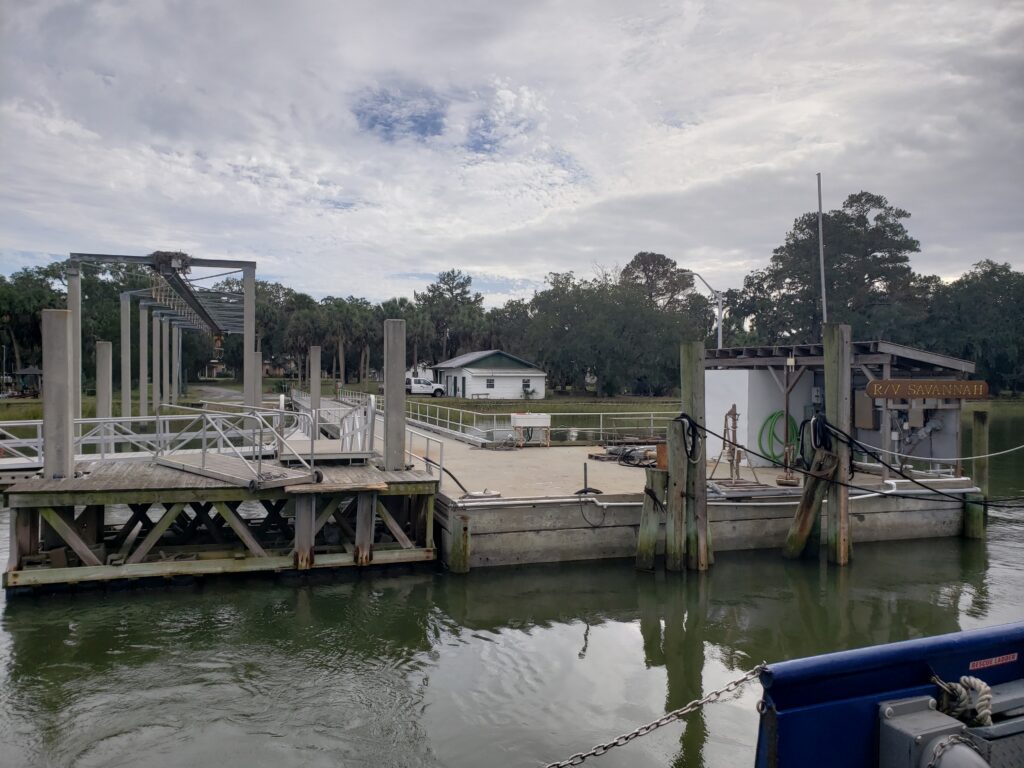
Once we get out to approximately 45 m deep, it is time to deploy our sampling equipment. Here is a picture of our modular Deep-focus Plankton Imager (mDPI). We recently had a paper published about this system and other approaches to imaging plankton (see here for a short article about it). The plankton that pass between those 2 black pods in the foreground are detected as “shadows.” The black pod on the right shines a light into the pod on the left that contains a camera. This lighting and camera setup allows us to count, size, and identify the various zooplankton. We also know exactly where the zooplankton occurred, along with a bunch of other oceanographic variables, so we can ask detailed questions about their ecology. For example, are they aggregated or dispersed? Do certain groups “prefer” particular water masses, and how rapidly do their populations change throughout the water column?
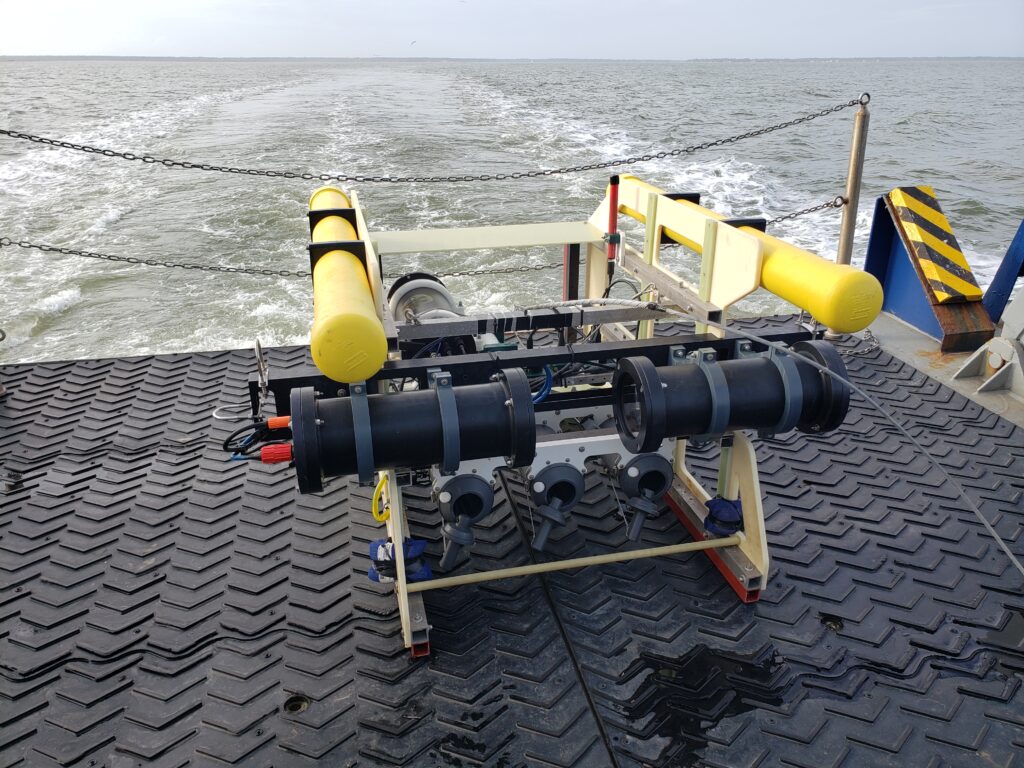
The mDPI is finding a lot of interesting stuff out there! On the continental shelf off of Brunswick and St. Marys, GA, at about 45 m bottom depth, there is a large diatom bloom happening right now. Surprisingly, we are not seeing that many zooplankton, but they are around in relatively low abundances (maybe there will be more later on?). Below is a picture of a doliolid nurse (barrel shaped animal with a “tail” of feeding buds). It is a pelagic tunicate, so it is in the same phylum as us humans (Chordata). The little sticks surrounding the doliolid are all diatoms (a type of phytoplankton). When these phytoplankton are very abundant, it gives the ocean a greenish hue (which you can see from the surface). This particular diatom species forms chains of cells that make them look like sticks in our shadowgraph images. These images are all from our towed camera system (mDPI pictured above), so we know the exact location and oceanographic variables associated with each one.
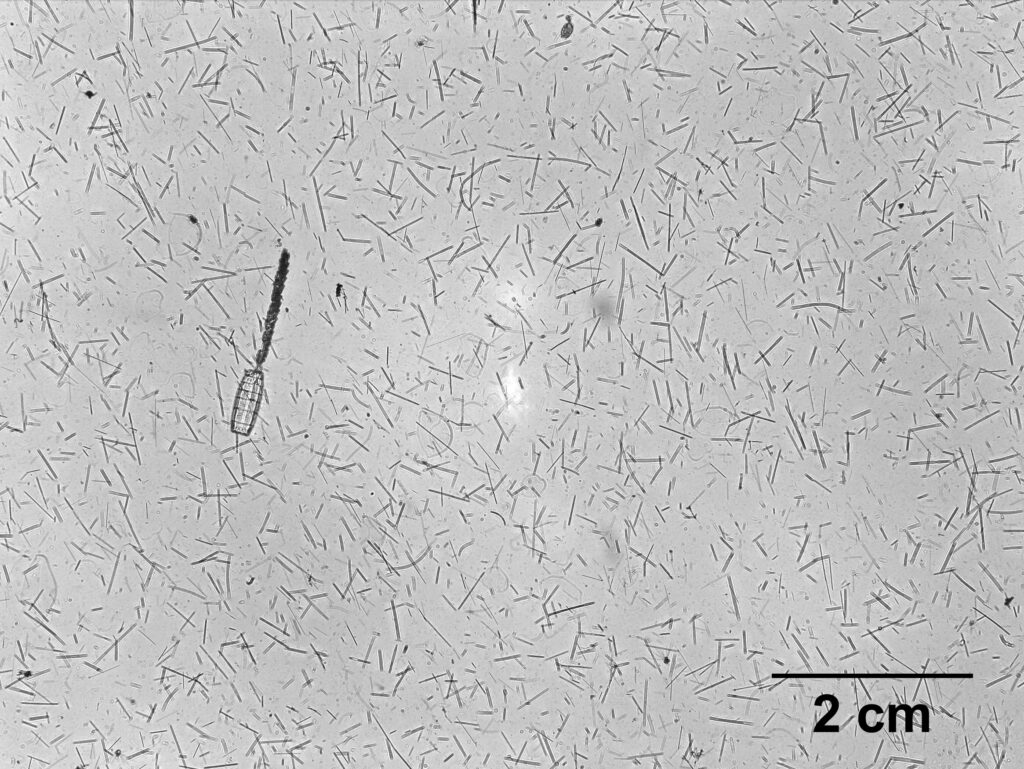
Here is a really nice shot of a large ctenophore from the mDPI. They use 8 rows of cilia to swim, and they are predators of other zooplankton. Ctenophores, also known as “comb jellies”, are in their own phylum, and unlike your conventional “jellyfish” (which are Cnidarians and have nematocysts or stinging cells), these comb jellies cannot sting you.
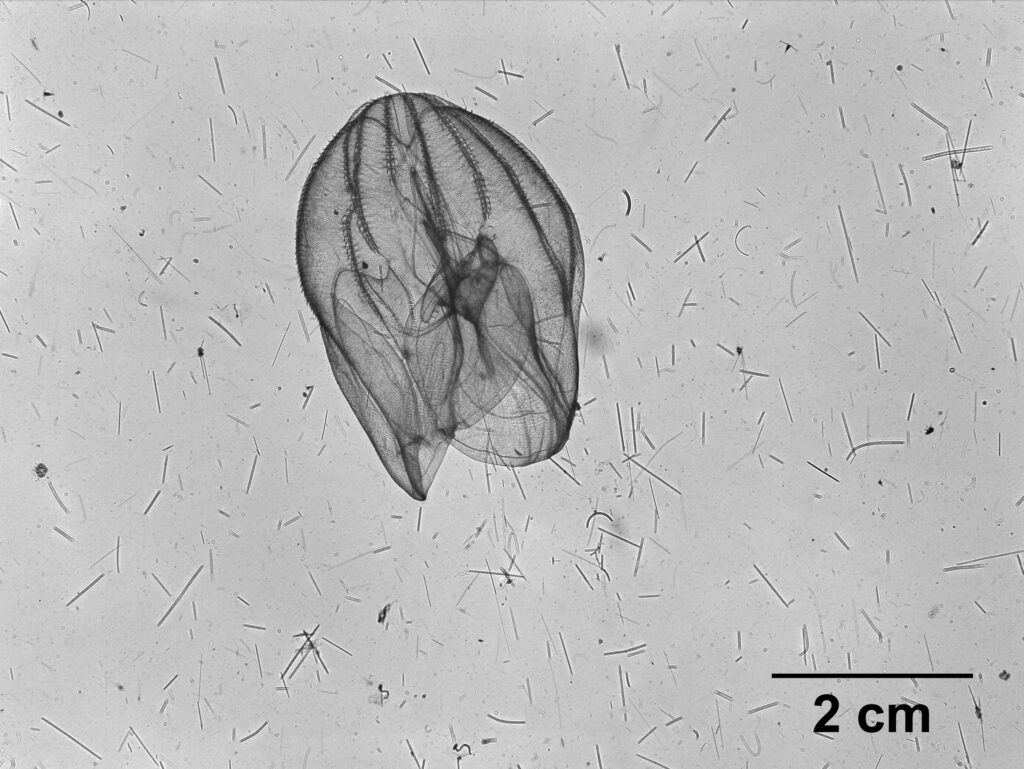
One of my favorite types of zooplankton are the larval fishes. Technically, they are referred to as “meroplankton” because they only spend part of their life cycle drifting in the water column as plankton. Below is a larval flatfish (or flounder). If it is lucky, it will grow up to swim around on its own (not at the mercy of the currents as it is now) and become a large bottom-dwelling fish. We generally cannot tell the species of the fish larvae from images alone, so we have to identify them to family or order level. If you look closely, you can see the fin rays. The head and gut of the larval fish are dark because light cannot pass through that area. The fins always show up really well though, which makes it easy to tell that it’s a fish larva!

Here’s a zoomed in look. Many flatfishes have a dorsal fin ray (one or several) on the top of their heads – this one has a very stubby fin ray. Can you see it?
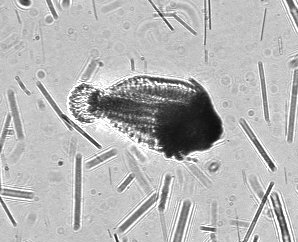
At each station, our team of scientists collects samples with various instruments. Below is the CTD that collects water at different depths and measures a bunch of oceanographic variables (temperature, salinity, dissolved oxygen, chlorophyll, etc.). Once it is back on the deck, I think it is kind of like a NASCAR pit crew where everyone goes out to the CTD and knows where to go to accomplish their task. The bottles are numbered so everyone knows at what depth each bottle was closed.
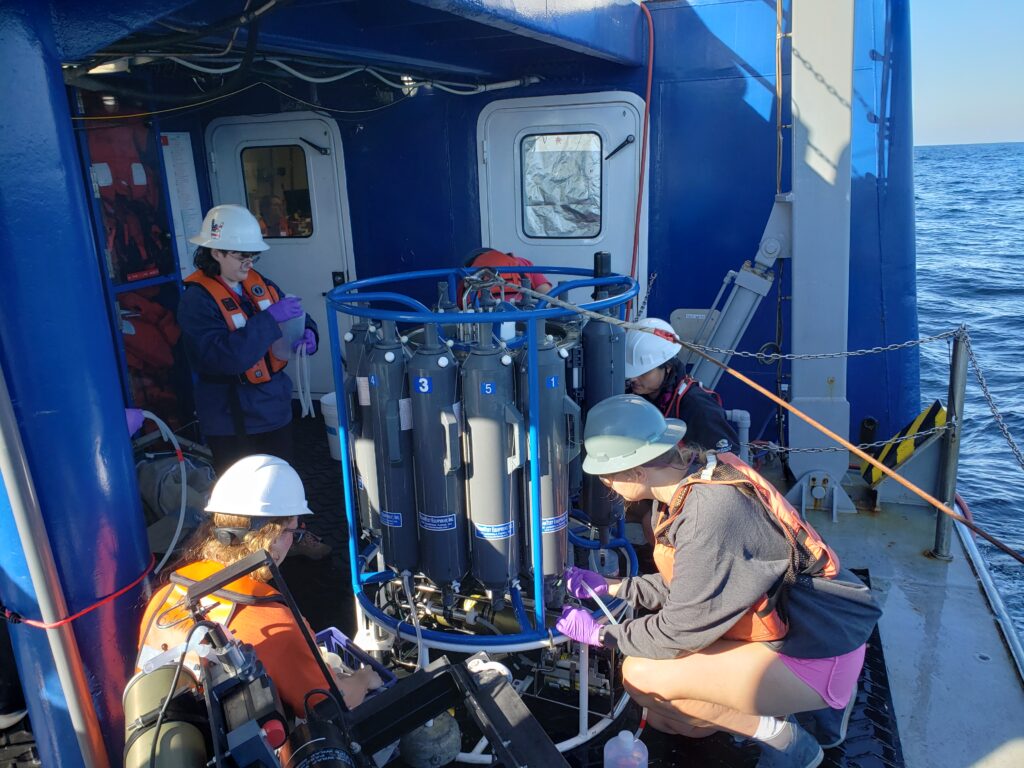
Here is a picture of the crew recovering the MOCNESS (Multiple Opening and Closing Net Environmental Sensing System) after a deployment. The two scientists on the right are PhD students in the ZERO-C Lab (Nele and Patrick). You can see a video about how the MOCNESS works here. Each net will capture plankton at a different depth (any organism that is larger than the mesh size of 200 microns), so we can ask questions about how the food webs and the diets of the organisms change among the parts of the water column where the various nets sampled.
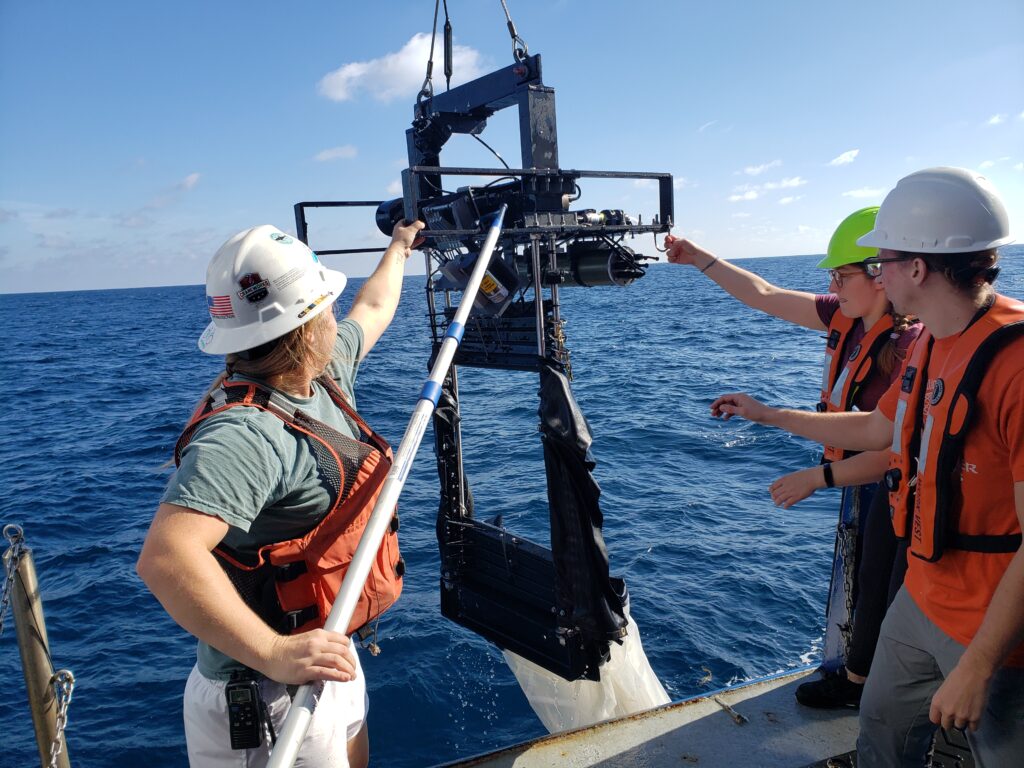
We will provide more updates as the cruise progresses. Hopefully we will get some calmer seas in the upcoming week!


